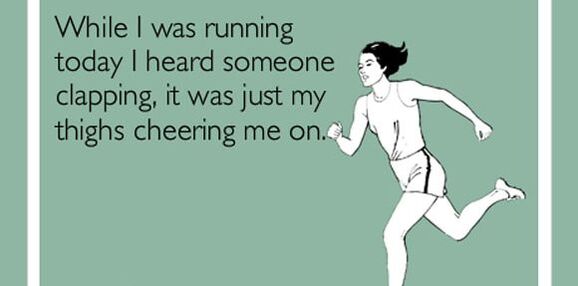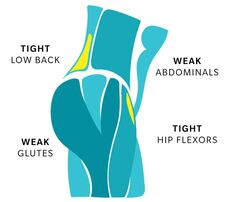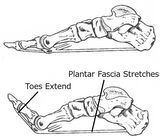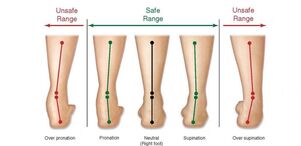I’ve seen a lot more athletes taking up running these days to supplement their primary training program. And with this new increase in mileage and frequency of running, whether you’re a novice or an elite runner, comes new aches, pains, and injuries. This post will address some of the most common things new runners should be aware of to improve performance and steer clear of injury, such as important mobility and stability drills, appropriate footwear, and proper technique – help keep ya’ll running for days!

Let’s start with the hips; from a mobility perspective. Hip flexor tightness is one of the most common things we see. Your hip flexor (iliopsoas) does exactly what it sounds like it does – it flexes your hip, aka brings your thigh toward your stomach. Cnsider this, if you were to run an 8 minute mile, you’re taking an average of 1,500 steps! That’s a lot of times that you’re asking your hip flexor to work, especially when you multiply that 1 mile by 2..3..even 4 miles or more. When hip flexors are worked to that degree, they become tense and often tight, causing your pelvis to rotate anteriorly (forward) which then negitvely affects the muscles on the opposite side, your glutes. And when muscles are lengthened, they’re typically weak.

This brings me to stability. Let me first say that running is technically a one-legged sport (both feet are never on the ground at the same time). One leg has to support the entire load of your body and much of that single leg stability comes from your glutes – gluteus medius in particular. Similarly, because running is a uniplanar motion (meaning you commonly go in one direction… forward), you’re rarely training your glutes the way they need to be trained. Your glutes wrap around to the sides of your hips, so they need lateral movement to strengthen them.
How does this affect your foot and ankle? Glad you asked! Your glutes control the amount of rotation of your thigh, which then (since everything in the body is connected) contributes to the amount of inward collapse happening, not only at your knee, but also in the arch of your foot (a movement known as pronation), which is what common culprit to pain and injury. So if you’re not doing supplemental lateral movements and glute strengthening, then you won’t be able to control your arch, counteract the pull of your hip flexors, or actively support your body the way you need to while running.
Here’s what we recommend:
1. Start with this KB psoas release for 2 minutes per side:
2. Then follow it up with:
a. Banded side step/squat combo. Shoot for 3 sets of at least 20ft of side stepping followed by at least 10 squats
b. Kettlebell Deadlift. Make it hard, make it heavy. Atleast 3 sets.
3. Single Leg Kettlebell Deadlift. Also make it hard, make it heavy. Atleast 3 sets.
Now let’s talk about the ankle and big toe. Hypomobility or joint stiffness can commonly develop in athletes. Because of the repetitive propulsion that is required from your feet and ankles, your calves and achilles tendons are likely to become tight. Over time, this tightness will affect the mobility of your ankle joint and limit your ability to bring your ankle in the opposite direction, the “toes to nose” direction known as dorsiflexion. With insufficient ankle mobility, the muscles surrounding your joint become overworked and can lead to overuse or “tendonitis” type injuries because they’re trying to move a joint that’s unable to be moved. Additionally, with months of running without supplemental mobility work, activities that require this “toes to nose” motion (which can also be thought of as decreasing the angle between your shin and foot), such as any kind of squatting or even going up and down stairs may be more difficult.
Similarly, the big toe (aka your body’s kickstand!!) is also an important part of that propulsion. It acts by what’s known as the “windlass mechanism”. As you propel yourself forward, your big toe is supposed to be able to extend. This winds up the plantar fascia underneath your foot in order to create a more rigid foot capable of maintaining your arch, withstanding your body weight, and allowing for a strong push off as you run.

With a stiff big toe, your plantar fascia can’t support your foot as it needs and your foot is more likely to overpronate or collapse inward. This excessive mobility in the midfoot alters the mechanics of your ankle-foot complex and is what commonly leads to injuries

What to do about your mobility:
1. Ankle dorsiflexion self mobilizations: perform 20 reps each side
2. Great toe extension self mobilizations: perform 20 reps each side
While mobility and strength are important elements you need to consider, there are other components that have just as big of an impact on your ability to stay pain free. Two of the biggest are choice of footwear (arch dependent) and your running technique. Check out part 2 of this series where we dive deep in each! Are you dealing with nagging pain every time you run? CLICK HERE to get in touch with us! Let’s solve the root cause so it NEVER comes back.
See you in part II,
Dr. Aerial

